Red light therapy is a deeply studied science, here you’ll find links to several studies highlighting the health benefits of light therapy. In this post I’ll also outline what those health benefits are. Let’s dig in!

Skip ahead to a section by clicking any of the options in this list:
- What is red light therapy?
- Benefits of Red Light Therapy
- How does red light therapy work?
- FAQ
- Scientific Explanations of RLT Benefits
What are other names for RLT “Red Light Therapy”?
When researching light therapy there are a lot of interchangeable terms and words used to refer to RLT. Here’s a list of commonly used names:
- PBM – Photobiomodulation
- Near Infrared Therapy
- LLLT Low-Level Laser Therapy
- Photonic Stimulation
- Cold Laser Therapy
- LPLT Low-Power Laser Therapy
What is red light therapy?
Treatment intended to cure or relieve a broad spectrum of symptoms while also improving the overall health and wellness of the participant. In other words, it’s a comprehensively studied therapy that brings a whole host of health benefits to participants. Light therapy is a tool you can use easily in your own home to improve your overall health. The best part? It’s a concept supported by hundreds of peer reviewed double blind and placebo controlled studies in addition to thousands of published studies.
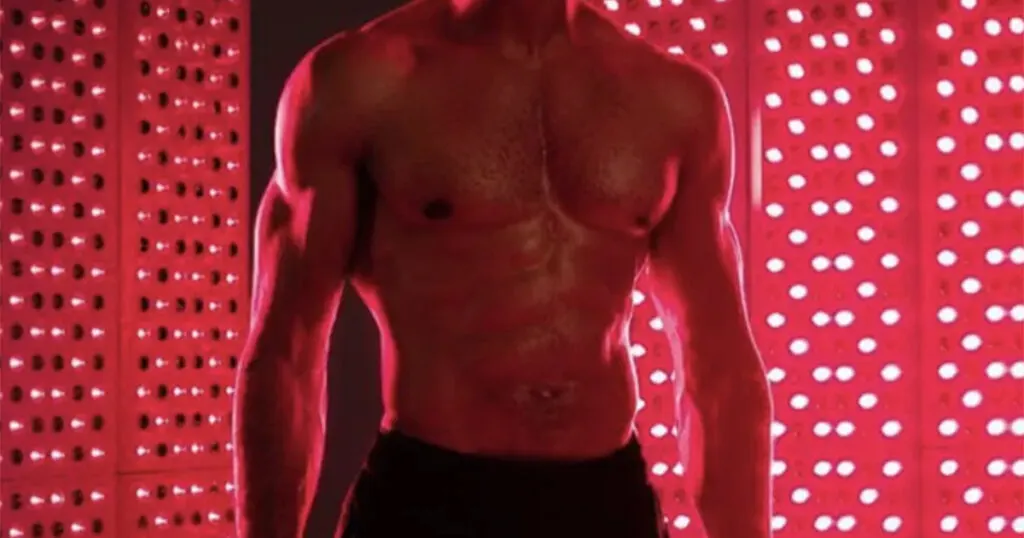
Energy via Light
Fat, Protein and Carbs: your body breaks these down in to the nutrients our bodies need for energy. The same is true for wavelengths of light; red and near infrared light provide the energy needed for the mitochondria in your cells to produce / convert the light in to ATP. When ATP production increases the cell’s ability to function improves. ATP is the energy currency of life.
“… electron transport, adenosine triphosphate (ATP) nitric oxide release, blood flow, reactive oxygen species increase and diverse signaling pathways get activated.” – Study located: US National Library of Medicine
“The mechanism of action involves photon absorption in the mitochondria (cytochrome c oxidase), and ion channels in cells leading to activation of signaling pathways, up-regulation of transcription factors, and increased expression of protective genes.” – PubMed.gov
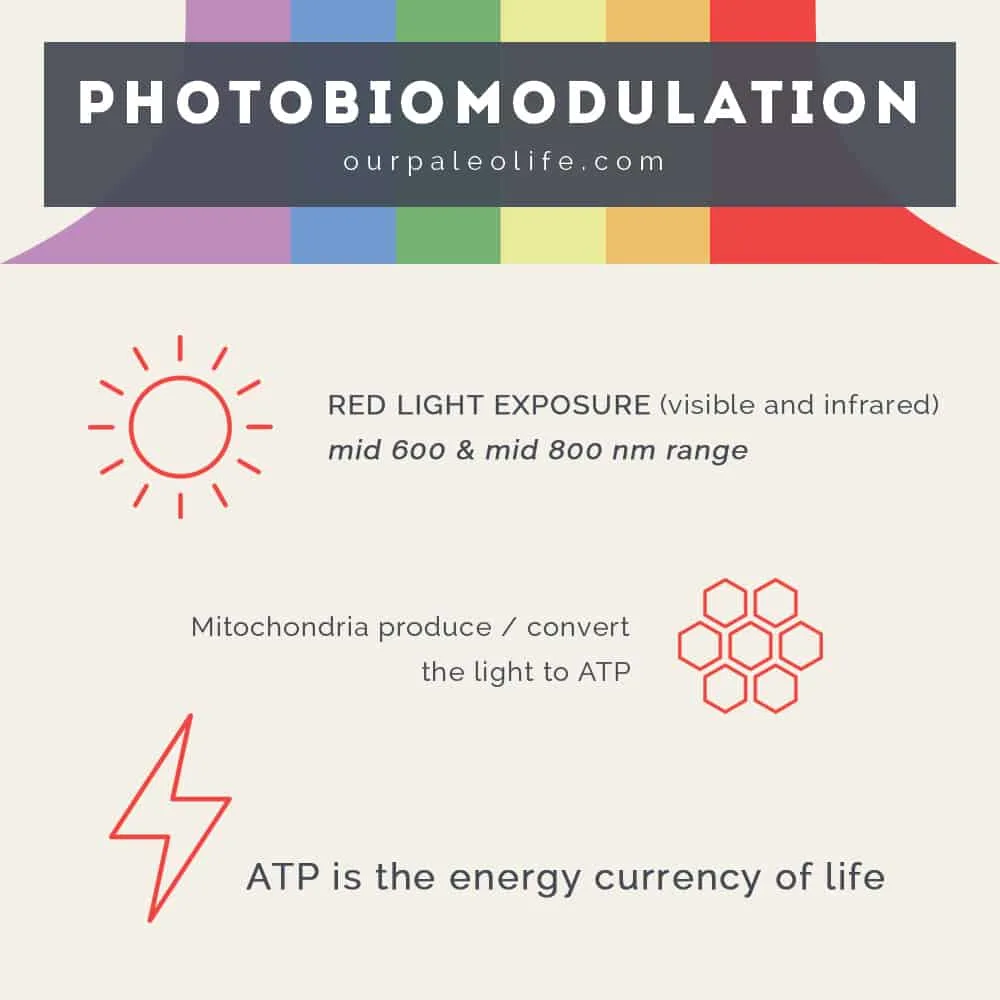
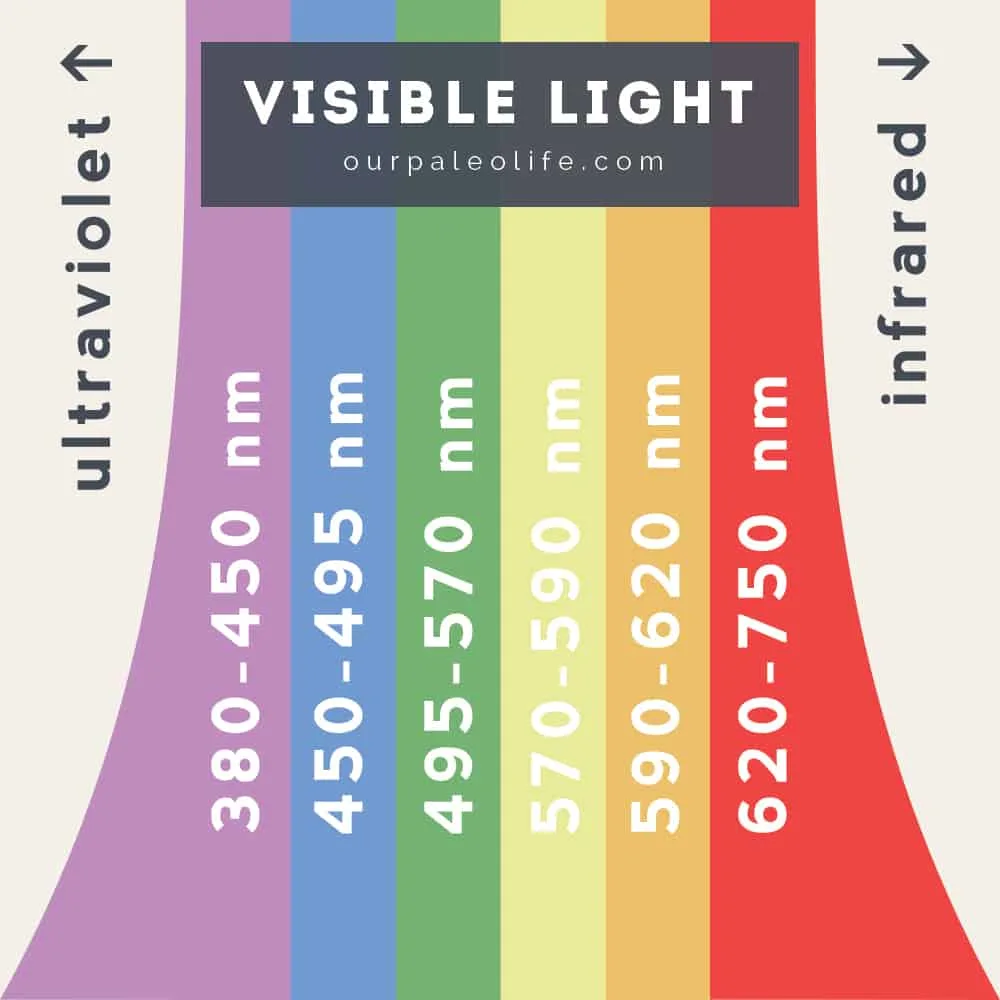
Benefits of Red Light Therapy
- Decreases Inflammation
- Tissue Repair & Cell Growth
- Increases Performance
- Improves Recovery Time from Injuries
- Improves Thyroid Function
- Boosts Testosterone Levels
- Improves Osteoarthritis
- Promotes Fat Loss
- Promotes Skin Health & Wound Healing
- Sunburn Prevention
- Treats Sunburn Damage
- Improves Oral Care
- Improves Mood
- Neurological Therapy
What is red light therapy… continued:
Red light and infrared light therapies are typically administered via LED light or laser (emits targeted light). The LED light technology is affordable and easy to use at home. You don’t need to go to a doctor to get ample dosages.
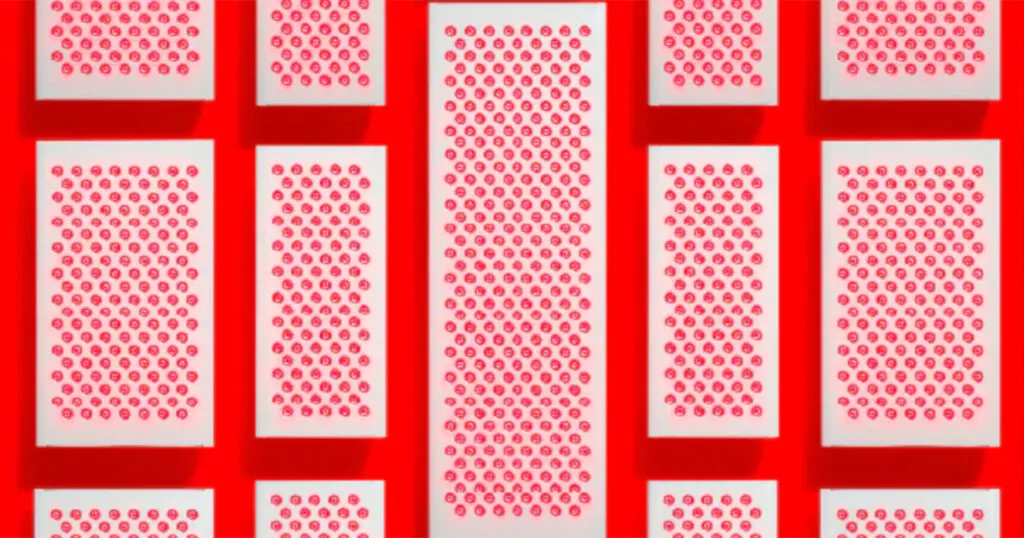
An LED panel might be your best option. You simply hang it on the wall and stand in front of it. A typical panel will have many LEDs (half red and half infrared). You’ll need to ensure the panel’s emitting rays are strong enough. We’ll get in to more of that later.
How does red light therapy work?
Red light therapy is typically referred to as PBM or Photobiomodulation. PBM stimulates cells to provide natural healing while also stimulating the mitochondria. This process stimulates ADP which in turn binds with free oxygen singlets to produce ATP.
ATP is the chemical allowing for energy release within cells which promotes loads of benefits in the body.
PBM has been known about for over 50 years, yet most people have never heard of it. This post will help you better understand the science, why it’ll benefit you, and the vast array of studies backing up the health claims.
Near Infrared vs. Red Light
Red Light Therapy (visible red + near infrared) ranges from 620 nanometers (nm) to about 1,000 nm in length. However, you can’t see light emitted at over 800 nm.
Any good therapeutic device will include both red light (visible at around mid 600nm range) and infrared light (not visible). Most high quality devices for therapeutic use will be programmed at 850 nm.
In this post, when I refer to red light therapy (generally) I’m referring to both visible and invisible (near infrared) light.
Frequently asked questions:
Does any red light work for red light therapy?
No. Wavelength and power density of the light are what provide the therapeutic benefit.
Does a red light device emit UV?
No. The light emitted from a therapeutic red light device barely even reaches the visible light spectrum. UV light ranges from 10 to 400 nm. Red light starts at 620 nm.
Does red light therapy provide vitamin D?
No. UV-B rays are required to produce vitamin D via a light source.
Can you burn or tan with red light therapy?
No. UV rays tan or burn the skin.
Does a red light device produce the same benefit as a SAD light?
No. A Seasonal Affective Disorder light provides a full spectrum of light.
Do you need eye protection with red light devices?
No. The red light in theory shouldn’t hurt your eye. However, you may experience overheating in the eye due to the infrared light. Red light therapy is believed to heal the eye.
Should I wear clothes during red light therapy?
No. The light may not penetrate through the clothes. Birthday suit is best.
Can’t I get the benefits of red light therapy from the sun?
You sure can! The big difference is the specific amount of red light emitted in a controlled environment. For therapeutic purposes you may not want to get so much UV. It’d be hard to get the right amount of red light therapy from the sun alone. RLT is not an alternative to getting sun, they work together for optimal health.
How do I know that red light therapy is working?
This entirely depends on what you’re looking for help with. The best way to know is to document symptoms prior to starting. When you begin the process of red light therapy, document each session, duration, and how the symptoms have changed.
How long does red light therapy take?
This answer depends on the power density of the light and dosage need. Most applications range from 5-20 minutes. It’s generally accepted that 10 minutes is a good baseline. Start there and see how you feel / record your changes. It’s also widely accepted to use the therapy every day or every other day. Some will use the therapy several times a day.
Some healing improvements may be noticed immediately or within a few days. However, most therapeutic benefits take several weeks to display improvements.
What time of the day should I use red light therapy?
The most important factor for improving your sleep in relation to light is by avoiding BLUE light at night when the sun goes down. I’d recommend using a sleep tracking device and create a schedule. Try early in the day (and see how your sleep is improved / stays the same / improves) then move to mid-day (if you can) and then before bed. Track your progress and adjust.
It’s thought (by some) that red light therapy late at night may suppress melatonin levels. It’s best to test and document.
With red light therapy, how long is too long?
There are diminishing returns on using red and infrared light therapy. This means that more isn’t better. I wouldn’t get more than 20-30 minutes per day per treatment area. However, it’s a good idea to look up studies and find the efficacy discovered via the study.
Are there any negative side effects with red light therapy?
EMF isn’t doing you any favors. If you have a device that emits low EMF, you’re just fine. Avoid any devices that do not clearly outline their EMF frequencies.
Other complaints with treatment include: headache, irritability, eye strain, and sleep disturbances. Note: that many more see benefits with sleep if done properly.
Is RLT safe for children?
Yes. Pets too.
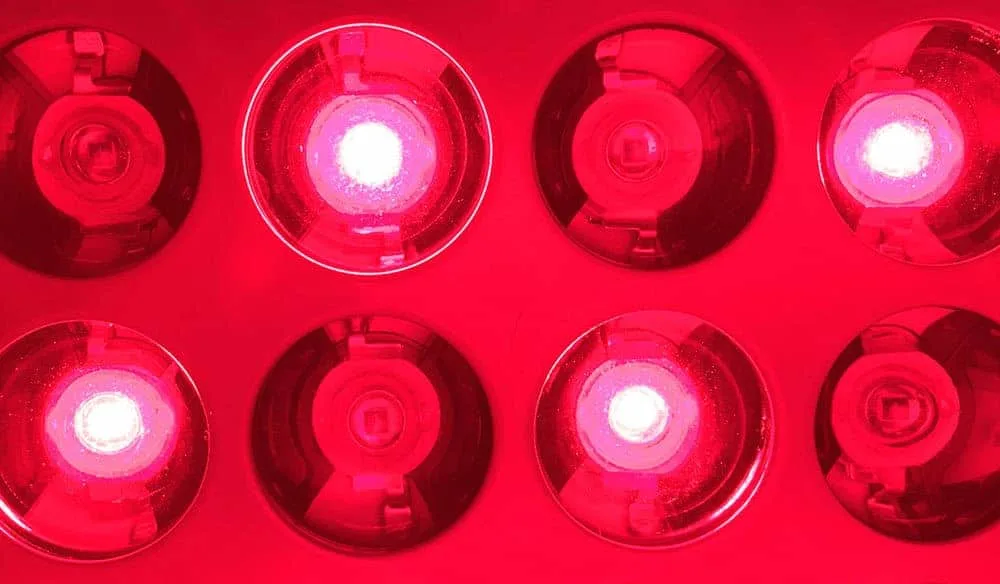
Scientific Explanations of RLT Benefits
A scientific review on how red light therapy provides benefits for our bodies.
How does red light decrease inflammation?
By decreasing the inflammatory response of oxidative stress (overproduction of free radicals). The light (positively) impacts antioxidant mechanisms. Antioxidants protect your cells from the effects of free radicals, in turn: reduction in inflammation. (NCBI, NCBI 2, NCBI 3)
From PubMed: “The main effects of LLLT were a reduction in the inflammatory process, the modulation of growth factors and myogenic regulatory factors, and increased angiogenesis.” – view more.
This study is good to reference in relation to the effects of low-level laser therapy with regard to prevention and treatment of therapy induced oral mucositis. This represents the efficacy of red light therapy in reducing the effects of inflammation.
How does red light promote cell growth?
The light photons are absorbed in the skin cells (and beyond, with near infrared light), diverse signaling pathways get activated. This activation promotes growth and tissue repair. This process alters the unwanted and damaging parts of the cell.
“In turn, LLLT by altering the cellular redox state can induce the activation of numerous intracellular signaling pathways; alter the affinity of transcription factors concerned with cell proliferation, survival, tissue repair and regeneration.” – LLLT Study Reference
How does NIR light increase performance?
Through the positive impact of antioxidant mechanisms, increased production of heat shock proteins (protect from apoptosis), and increased oxygen (& nutrients) to muscle tissue.
A look at the clinical studies:
- PBM 3X improved endurance
- Muscular strength gain with LLLT (prior to eccentric training)
- Enhanced Muscle repair.
- Decreasing muscle fatigue. + (NCBI)
- Targeted stem cell growth.
- Changes in Biochemical Markers.
How does LLLT improve recovery time from injuries?
This is similar to how light at a specific wavelength boosts performance and recovery. The impact (positive) of antioxidant mechanisms, increase in heat proteins, and increased oxygen. This study concludes that LLLT is an effective treatment for sports injuries, particularly (found in their practice): jumper’s knee, tennis elbow, and Achilles tendinitis.
Understanding the effect on the mitochondria via penetrated red light therapies give a clear picture on how the cells are empowered to work more efficiently. Healing needs in the body are no different.
How does near infrared light therapy help thyroid function?
By preventing high levels (too high) of (NO) nitric oxide (stresses) which inhibit cell respiration. There’s a removal process occurring in the mitochondrial enzymes – this makes for better oxygen uptake in the mitochondria.
The thyroid is located in your neck, one of several glands making up your endocrine system (hormone production). Hypothyroidism means that the thyroid is unable to secrete enough hormones (depression and fatigue). Hyperthyroidism is when too many hormones are being released (irritable, weak muscles).
When red light / infrared light is applied therapeutically, the thyroid gets a rest / boost from the reduction in NO.
- Effects of LLLT on Thyroid Vascularization of Patients with Autoimmune Hypothyroidism
- Low-level laser in the treatment of patients with hypothyroidism induced by chronic autoimmune thyroiditis: a randomized, placebo-controlled clinical trial.
- Phototherapeutic Effect of Low-Level Laser on Thyroid Gland of Gamma-Irradiated Rats.
How does RLT improve testosterone?
By the creation of more ATP via the mitochondria in the Leydig cells (cells responsible for producing testosterone). This in turn helps increase the amount of the hormone being produced.
How does red light therapy improve Osteoarthritis?
Cells absorb light wavelengths (600 nm – 1,000 nm range) which in turn creates cellular energy. This cellular energy allows the function of the cells to “do their job” without as much restriction. This is the story of PBM in general as you may have noticed reading through the process of RLT in this post.
Osteoarthritis occurs when the protective cartilage on the ends of your bones wears down. Your cells need more energy to challenge the effects of age and injury. This study concluded that pain and morning stiffness are reduced with red light therapy.
- Low level laser therapy for osteoarthritis and rheumatoid arthritis: a metaanalysis.
- Synergic effects of ultrasound and laser on the pain relief in women with hand osteoarthritis.
- Efficacy of low level laser therapy associated with exercises in knee osteoarthritis: a randomized double-blind study.
How does RLT improve fat loss?
Your body first absorbs the light energy and turns that energy in to improved cell function. This improved cell function is made possible by the cellular respiration process (breakdown and conversion of stored energy and release of waste products). The adipocytes are affected causing the lipids to disperse.
- Reduction of the effect of obesity-linked glucose intolerance
- Significant girth loss
- Reduction of circumference measurements
- Exercise training + LLLT promotes weight loss
How does red light therapy improve skin health?
Through the process of improved cell function and the production of new cells. The light absorption works at a cellular level, which impacts sebum production (acne contributer), control of cytokines (impacts skin inflammation), while also improving overall pigmentation. When the cells receive the energy needed to improve their proper function, the skin’s natural appearance will show. These improvements are aided by an increase in collagen production in the skin.
The same cellular functions mentioned here are applied to wound healing as well. When cells receive the energy needed to boost recovery (their proper function) the body is more prepared to heal.
LLLT also reduces UV damage as a treatment and pre-treatment option.
- Wound healing – epithelial cells
- LLLT skin therapy study (stimulate, heal, restore)
- Increased collagen and skin rejuvenation
How does photobiomodulation improve oral health?
Direct and indirect PBM improves hypersensitivity, reduces harmful bacteria, increases bone remodeling, while also healing wounds in the mouth. This is due to improved cellular function. Light therapy in the ranges from mid 600’s to early 900’s have been shown to produce an increase in ATP – this in turn provides a greater currency of energy for healing and cellular management.
- LLLT on tooth related pain
- Bone repair improvements with bone regeneration techniques
- LLT improved soft and hard tissue healing
How does red light and infrared light improve mood?
By decreasing anxiety and depression. The light penetrates the skull and positively effects the cerebral cortex – believed to be due to the enhancement of the mitochondrial metabolism (creating the proper energy currency needed for ideal brain function).
- Improved mood (after traumatic brain injury)
- Treatment for those with MDD (major depressive disorder)
How does LLLT offer neurological therapy?
The light therapy suppresses inflammation and enhances (microglia) cellular function. “We have identified a new and important neuroprotective signaling pathway that consists of regulation of microglial phagocytosis and inflammation under LLLT treatment.” – Study published: US National Library of Medicine
- Improved memory, retention and performance
- LLLT effect on the eye and brain
- LLLT significant improvement with stroke patients – 18 hours after + Several therapies in Neurorehabilitation
This post is our opinion, the information found here is not meant to treat, diagnose, or cure any disease or problem you may be experiencing. All information found here and throughout this website is for informational purposes only. If you are seeking medical advice, please consult with your health provider.

Clara Delaney
Wednesday 9th of June 2021
Are there any sculptpod in Minnesota
Rob Benson
Wednesday 16th of June 2021
I do not know.
Eli Richardson
Friday 19th of February 2021
It's great that you talked about how red light therapy improves your health. My sister is really into wellness and health therapy. She enjoys yoga, meditating, and self-care solutions. That's why I'm sure she'll be happy to hear about this new technology, so I'll be sure to share this article with my sister. Thanks for helping me learn about the health benefits of red light therapy.
Rob Benson
Friday 19th of February 2021
Welcome and thanks for leaving a comment!
Victoria Haworth
Friday 17th of July 2020
I was so much concerned about the effectiveness of red light therapy before reading this article. A friend of mine told so many negative things related to there because of which I was worried but now I am completely satisfied. You have provided a reasonable answer to each of the queries that have convinced me to undergo this therapy. I have decided now to use an LED panel to get the required results.
otomatik panjur
Tuesday 27th of August 2019
Hey! Quick question that's completely off topic. Do yoou know how to make your site mobile friendly? My welog looks weird when viewing from my iphone. I'm trying to find a theme or plugin that might be able to correct this issue.
If you have any suggestions, please share. Appreciate it!
Thomas Peterson
Thursday 18th of July 2019
I like that you mentioned that photobiomodulation therapy can help with boosting testosterone levels. I have noticed that I have been feeling particularly down lately and I haven't really been myself. Maybe I should try photobiomodulation light bed therapy to see how that might help me.